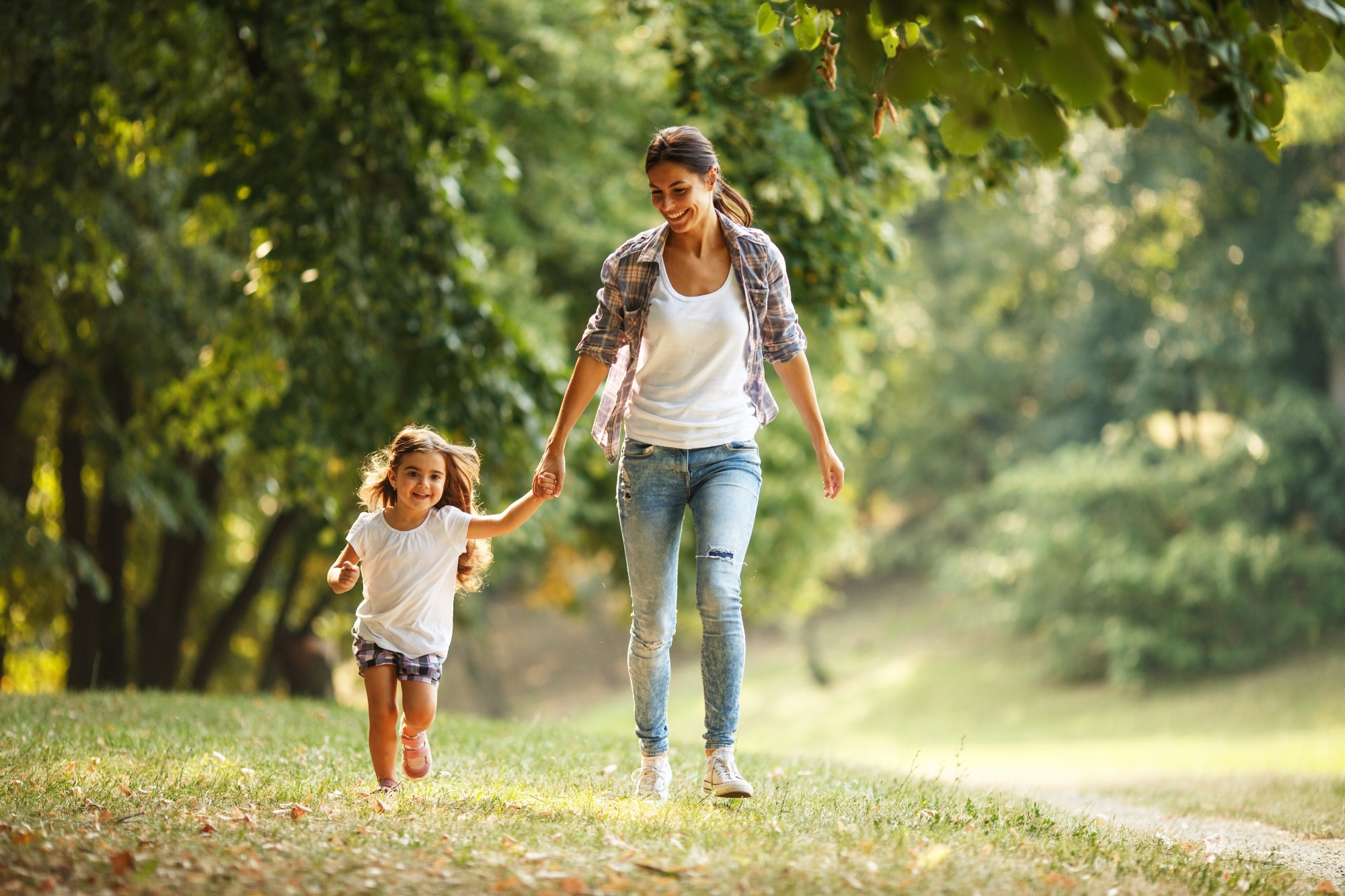In a recent study published in JAMA Network Open, a group of researchers examined the association between early-life exposure to residential green space and changes in bone mineral density in young children.
 Study: Exposure to Residential Green Space and Bone Mineral Density in Young Children. Image Credit: BalanceFormCreative/Shutterstock.com
Study: Exposure to Residential Green Space and Bone Mineral Density in Young Children. Image Credit: BalanceFormCreative/Shutterstock.com
Background
Bone mass, crucial for lifelong bone strength, peaks in early adulthood and largely depends on childhood accrual, influencing osteoporosis onset and fracture risk. Early-life factors, including nutrition, physical activity, genetics, and environment, are significant in this accrual.
Studies link childhood green space exposure to neurocognitive, mental, social-behavioral, and emotional benefits, along with lower obesity risk, reduced blood pressure, and increased physical activity.
Further research is needed to comprehensively understand how early-life exposure to green spaces influences bone mass accrual and its long-term effects on preventing osteoporosis and fractures, given the current limited and mixed findings on its impact on bone health across different age groups.
About the study
The present study was part of the Environmental Influence on Aging in Early Life (ENVIRONAGE) birth cohort in Belgium, enrolling mother-newborn pairs from East-Limburg Hospital in Genk beginning in February 2010.
After four to six years, mother-child pairs were invited for a follow-up at Hasselt University. The mothers provided written consent, and the children gave oral permission for the subclinical investigations. The study adhered to ethical standards and followed the Strengthening the Reporting of Observational Studies in Epidemiology (STROBE) guidelines for observational studies.
From 2014 to 2021, 1,492 children aged four to six were eligible, with 972 meeting the follow-up criteria. Of these, 541 pairs participated, and radial bone mineral density was assessed in 327 children. This cohort was representative of Flanders, Belgium.
Data were collected via a semistructured questionnaire covering lifestyle, sociodemographic, and health details. Children's ethnicity, based on grandparents' origins, and household passive smoke exposure were recorded. Daily screen time, dairy product consumption, vitamin supplementation, and maternal education levels were also noted. The children's weight and height were measured for calculating their body mass index.
Bone mineral density, indicative of bone strength, was assessed using quantitative ultrasonography, a radiation-free method suitable for young children. This was conducted using a Sunlight MiniOmni Bone Densitometer, and the speed of sound along the bone was measured.
The study also focused on the exposure to residential green space, calculated using high-resolution land cover data. The green space around each child's residence was quantified within varying radii, using Geographic Information System software.
Statistical analysis, performed in early 2022, included linear and logistic regression models to explore the relationship between green space exposure and bone mineral density. The analysis considered several covariates like age, weight, sex, and ethnicity. The study sought to understand the probability of having low bone mineral density, compared against a sex-specific 10th percentile threshold. The results were adjusted for factors like screen time, vitamin intake, dairy consumption, and neighborhood income, aiming for a comprehensive understanding of the factors influencing bone mineral density in children.
Study results
In the present study, 327 children, comprising 55% girls and 45% boys, were analyzed. At the follow-up visit, their average age was 4.6 years, with an average weight of 18.5 kg and height of 107.4 cm. Predominantly of European descent (95.1%), a majority (77.3%) were not exposed to passive smoke.
Screen time varied, with 53.5% spending 1-2 hours daily, 37.8% less than an hour, and 8.7% over 2 hours. Regarding nutrition, 33.3% took vitamin supplements, and 87.5% consumed at least one dairy product daily.
The children's mean radial bone mineral density was 3678.4 m/s. The mothers, averaging 35.7 years with a body mass index of 25.0, were mostly highly educated. The neighborhoods' median annual income averaged €26,487.
Green space around the residences varied, with total green space ranging from 49.5% to 55.9%, high green (vegetation over 3 meters) from 15.1% to 34.3%, and low green (under 3 meters) from 21.6% to 34.4% within a 100 to 3000-meter radius.
Bone mineral density increased with the child’s age and height but not significantly with other factors like sex, weight, ethnicity, screen time, vitamin intake, dairy consumption, maternal education level, or neighborhood income.
Residential green space exposure was positively linked to bone mineral density after adjusting for factors such as the child’s age, weight, sex, height, ethnicity, and maternal education. The strongest connection was seen with total green space within a 500-meter radius, where a 21.2% increase in green space was associated with a 27.38 m/s increase in bone mineral density. High green space showed similar trends. Low green space showed significant associations only within the 1000 and 3000-meter ranges.
The risk of having low bone mineral density was inversely related to green space exposure. An increase in total green space within 1000 meters was linked to a 67% lower risk of bone mineral density below the sex-specific 10th percentile, and a similar reduction was noted with high green space.
Sensitivity analyses confirmed these findings. Adjustments for factors like screen time, dairy consumption, season, vitamin supplementation, and neighborhood income generally maintained the significance of the associations between green space exposure and bone mineral density.
However, some associations with high green space became insignificant after adjusting for all variables in the full model, especially within the 300 and 3000-meter ranges. Significant associations were observed between low green space exposure within the 3000-meter radius and bone mineral density after adjusting for vitamin supplementation.